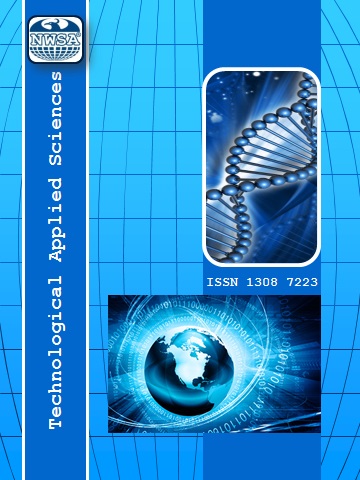References
[1] Crouch, I.G., Cimpoeru, S.J., Li, H., et al., (2017). The science of armour materials. Woodhead Publishing in Materials. 55-115.
[2] U.S. Military Specification, (2009). MIL-DTL-12560J (MR), Armor plate, steel, wrought, homogeneous, U.S. Army Research Laboratory, Aberdeen Proving Ground.
[3] U.S. Military Specification, (2008). MIL-DTL-46100E (MR), Armor plate, steel, wrought, high-hardness, U.S. Army Research Laboratory, Aberdeen Proving Ground.
[4] U.S. Military Specification, (2009). MIL-DTL-32332 (MR), Armor plate, steel, wrought, ultra-high hardness, U.S. Army Research Laboratory, Aberdeen Proving Ground.
[5] Nowacki, J. and Lukojc, A., (2005). Structure and properties of the heat-Affected zone of duplex steels welded joints. Journal Mater Process Technology, 164:1074-1081.
[6] Ade, F., (1991). Ballistic qualification of armour steel weldments. Welding Journal, 70:53-54.
[7] Kyryk, Y., (2015). Effect of temperature on microstructure and mechanical behavior of diffusion bonded Armor 500 and AISI 1040 steels. Materials Testing, 57(4):296-300, DOI:10.3139/120.110716.
[8] Sarsylmaz, F., Kyryk, I., and Baty, S., (2017). Microstructure and mechanical properties of armor 500/AISI2205 steel joint by friction welding. Journal of Manufacturing Processes, 28:131-136.
[9] Merzali, C., (2013). Improving the properties of the heat affected zone after welding in armor steels by heat treatment. Masters thesis. Ystanbul Teknik Üniversitesi, Turkey.
[10] Bekçi, M.L., Canpolat, B.H., Usta, E., et al., (2021). Ballistic performances of Ramor 500 and Ramor 550 armor steelsat mono and bilayered plate configurations. Engineering Science and Technology an International Journal, 24:990995.
[11] Pakandam, F. and Varvani-Farahani, A., (2010). A comparative study on fatigue damage assessment of welded joints under uniaxial loading based on energy methods. Procedia Engineering, 2:20272035.
[12] Teker, T. and Özdemir, N., (2012). Weldability and joining characteristics of AISI 430/ AISI 1040 steels using keyhole plasma arc welding. The International Journal of Advanced Manufacturing Technology, 63:1-4, DOI:10.1007/s00170-011-3890-5.
[13] Cimpoeru, S.J., (2017). The mechanical metallurgy of armour steels, Defence Science and Technology Group DST-Group-TR-3305. (2016):1-32.
[14] Crouch, I.G., Cimpoeru, S.J., Li, H., et al., (2017). Armour steels. The Science of Armour Materials, 55115, DOI:10.1016/b978-0-08-100704-4.00002-5.
[15] Nihal, Y., Yeliz, P., and Kubilay, A., (2013). Investigation of deformation characteristics of composite materials used in armor design. Electronic Journal of Machine Technologies, 10(4):1-21.
[16] Ta?kaya, S. and Gür, A.K., (2019). Investigation of the penetration balance of the wire feed speed in the weld metal in joining ramor 500 Armor Steel by Submerged Submerged Welding Method. GÜFBED/GUSTIJ, 9(3):444-453.
[17] Özdemir, N., Sarsylmaz, F., and Hasçalyk, A., (2007). Effect of rotational speed on the interface properties of friction-welded AISI 304L to 4340 steel. Materials and Design, 28:301307.
[18] Ali, G., Selçuk, B., and Mustafa, S.K., (2019). Effect of different arc welding processes on the metallurgical and mechanical properties of Ramor 500 armor steel. Journal of Engineering Materials and Technology, 142(2):1-23, DOI:10.1115/1.4045569.
[19] Rajesh Jesudoss Hynes, N., and Shenbaga Velu, P., (2018). Microstructural and mechanical properties on friction welding of dissimilar metals used in motor vehicles. Materials Research Express, DOI:10.1088/2053-1591/aaabe6.
[20] Lee, D.G., Jang, K.C., Kuk, J.M., et al., (2004). Fatigue properties of inertia dissimilar friction-welded stainless steels. Journal Mater Process Technology, 155156:14021407.
[21] Özdemir, N. and Orhan, N., (2005). Microstructure and mechanical properties of friction welded joints of a fine-grained hypereutectoid steel with 4%Al. Journal of Materials Processing Technology, 166(1):63-70, DOI:10.1016/j.jmatprotec.2004.07.095.
[22] Adin, M.S. and Okumu?, M., (2021). Investigation of microstructural and mechanical properties of dissimilar metal weld between AISI 420 and AISI 1018 steels. Arabian Journal for Science and Engineering, DOI:10.1007/s13369-021-06243-w.
[23] Mercan, S., Aydyn, S., and Özdemir, N., (2015). Effect of welding parameters on the fatigue properties of dissimilar AISI 2205AISI 1020 joined by friction welding. International Journal of Fatigue, 81:7890.
 +90(535) 849 84 68
+90(535) 849 84 68 nwsa.akademi@hotmail.com
nwsa.akademi@hotmail.com Fırat Akademi Samsun-Türkiye
Fırat Akademi Samsun-Türkiye
